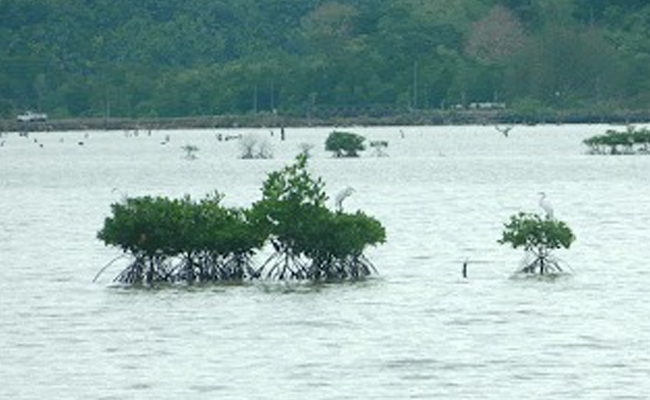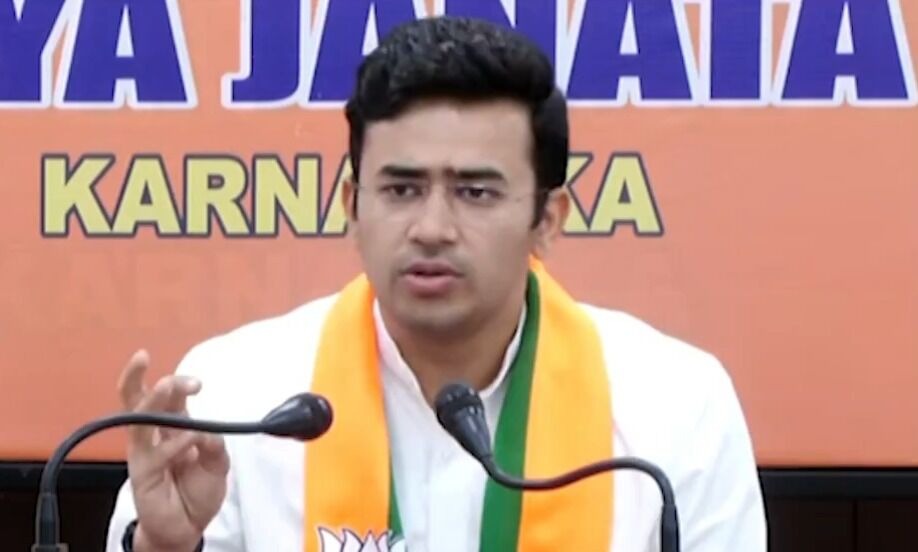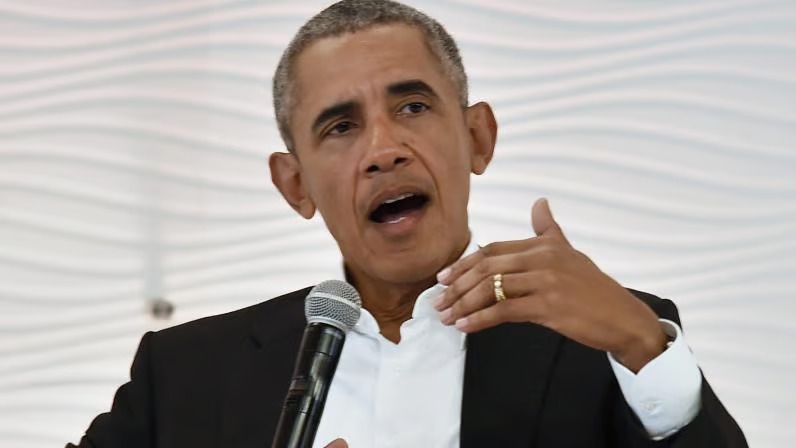New Delhi, Jun 27: The Delhi Police detained more than 1,500 people for up to two hours and seized about 270 vehicles from its central district during an intensified night patrol to contain street crimes in the national capital, officials said on Tuesday.
The intensive campaign between 10 pm and 2 am Monday night came two days after a delivery agent and his associate were allegedly robbed of Rs 2 lakh at gunpoint by four motorcycle-borne men inside the busy Pragati Maidan tunnel. Seven people have so far been arrested in connection with the Saturday incident.
In the Central district alone, 1,587 people were detained under section 65 (persons bound to comply with the reasonable directions of a police officer) of the the Delhi Police Act to verify their particulars and whereabouts and 273 vehicles were seized, a senior police officer said.
The vehicles were seized under section 66 (police to take charge of unclaimed property) of the same act, he said.
Police said they were detained for not more than two hours to check their whereabouts and verify their particulars.
"The very purpose of this exercise was to enhance police visibility, instil sense of safety and security among the residents of the district and to deter the bad characters. For the purpose, an elaborate plan was chalked out and accordingly special pickets were placed at strategic locations, mobile squads were prepared for joint patrolling and special teams were prepared for foot patrolling," the officer said.
All areas particularly secluded places, narrow streets and dimly lit stretches were covered by foot and mobile patrolling teams, he said.
During checking, sensitive pockets, listed criminals were specifically checked.
The drive was carried out on Monday from 10 pm to 2 am.
According to the police, action was also taken under relevant sections of the CrPC against "bad characters" and those disturbing peace.
Officers of all ranks were on the ground on Monday night with special emphasis on foot patrolling. The force was mobilised in all vulnerable areas of the district and verifications were carried out in the homes of "bad characters", they said.
A large number of police personnel were deployed across the 15 districts of the force to check suspicious movements and curb criminal activities, police said.
The special drive was carried out under the supervision of the special commissioners of police (law and order) Dependra Pathak and Sagar Preet Hooda who were also on the ground to ensure that no untoward incident takes place and citizens feel safe to travel even late at night, according to police.
Intense checking was carried out at all important locations, including Red Fort, the Pragati Maidan tunnel, the main roads, dark spots and border areas of the national capital. Extra pickets have also been installed to keep an eye on suspicious vehicles, a police officer said.
Let the Truth be known. If you read VB and like VB, please be a VB Supporter and Help us deliver the Truth to one and all.
It was a holiday, everyone at home was relaxing. My sister-in-law and I decided to prepare a light breakfast and planned a special biryani for lunch. With this decision, we set about cleaning the house and getting other chores done. Suddenly, I felt as if I were going to faint. I mentioned it to my sister-in-law, who was in the kitchen at the time, telling her, “I feel like I’m going to fall.” She responded, “It's not dizziness, it’s an earthquake! Run!”
We both dashed to our respective rooms to pick our children and joined the rest of the family outside on the road.
It was December 26, 2004, at precisely 7:58:53 in the morning, a massive earthquake, measuring between 9.2 and 9.3 in magnitude, struck off the western coast of northern Sumatra, Indonesia. Known to the scientific community as the Sumatra-Andaman earthquake, this underwater mega thrust earthquake was caused by the rupture between the Burma and Indian tectonic plates. Though theoretically, the Richter scale has no upper limit, in practice, earthquakes of magnitude greater than 8.6 are rarely recorded.
This was a new and terrifying experience for me; it felt as though the world was ending. The earthquake was marked by the longest fault rupture ever recorded, spanning between 1,200 to 1,300 kilometers (around 720 to 780 miles), and the faulting itself lasted for an unprecedented ten minutes. The planet’s surface trembled by as much as 10 millimeters (0.4 inches), and the quake was powerful enough to trigger tremors in remote regions like Alaska.
Once the ground ceased its violent shaking, we all, shaken and sharing our fear and disbelief, made our way back inside. Unaware that this was only the beginning, we noticed that both electricity and phone lines were down. Those who had ventured out early to gather essentials returned with alarming news: “The water is rising!” At that moment, none of us in these islands knew what that meant. Soon, our world would change forever as we encountered, for the first time, the word "tsunami"- a phenomenon that was about to become the world's first global disaster.
This massive tsunami resulted from an underwater earthquake in the Indian Ocean. It devastated fourteen countries with approximately 230,000 deaths globally. At Andaman and Nicobar alone, official statistics confirm 3,077 persons missing declared dead. Over 50,000 persons from the local population residing on both islands were ravaged by these waves with, perhaps, many other silent lives engulfed by those mighty waves. Entire livelihoods were destroyed as sea water ruined the agricultural land in Nicobar Islands while submerging large areas of farmland in South Andaman. Since then, December 26th comes to be known as 'Boxing Day' in these islands.
As we approach the 20th anniversary of the disaster, today, the 5th November commemorates the event known as Inamura-no-hi of 1854, when Japanese farmer Hamaguchi Goryō foresaw the approach of a tsunami following an earthquake.He noticed the warning sign and set fire to his paddy sheaves to warn his village so that they could save themselves before the disaster struck. This is one of the earliest examples of He noticed the warning sign and set fire to his paddy sheaves to warn his village so that they could save themselves before the disaster struck. This is one of the earliest examples of community preparedness in the face of natural disasters.
The observance underscores the need for community awareness about the risks of tsunamis since more than 700 million people live along vulnerable coastlines. It also focuses on the strengthening of global cooperation to increase tsunami readiness, especially as the population density in coastal regions continues to rise.
The lead agency of the UN for coordinating disaster risk reduction is the United Nations Office for Disaster Risk Reduction, known as UNDRR, in the UK. Using its area of expertise, it helps strengthen partnerships with national and local governments, intergovernmental organizations, civil society, and the private sector.
The observance reminds global leaders the need for community awareness about the risks of tsunamis since more than 700 million people live along vulnerable coastlines. It also focuses on the strengthening of global cooperation to increase tsunami readiness, especially as the population density in coastal regions continues to rise.
The lead agency of the UN for coordinating disaster risk reduction is the United Nations Office for Disaster Risk Reduction, known as UNDRR, in the UK. Using its area of expertise, it helps strengthen partnerships with national and local governments, intergovernmental organizations, civil society, and the private sector. This year’s theme for World Tsunami Awareness Day resonates with the International Day for Disaster Risk Reduction and the Summit of the Future, emphasizing the role of “youth and future generations.” With the campaign #AreYouReady24, observance activities aim to honor the 20th anniversary of the Indian Ocean Tsunami by passing on valuable lessons to today’s youth. UNDRR is encouraging tsunami-prone nations to enhance evacuation routes, install updated warning systems, and promote awareness among children and young people. Additionally, they invite youth and educational institutions to engage with the *Stop Disasters* online game, fostering practical knowledge on saving lives during disasters.
The memories of this tsunami unleashed by a 9.0 magnitude earthquake which, 20 years on, released energy equivalent to 23,000 Hiroshima-type atomic bombs taking only 15 minutes to 7 hours to devastate fourteen countries and killing over 230,000 people are a potent reminder of the catastrophic consequences in the event of inadequate preparation. We have to learn from this tragedy so that the same mistake does not happen in the future. The administration should give emphasis to efficient disaster risk management and resilient early warning systems so that vulnerable communities are protected from such serious disasters.





